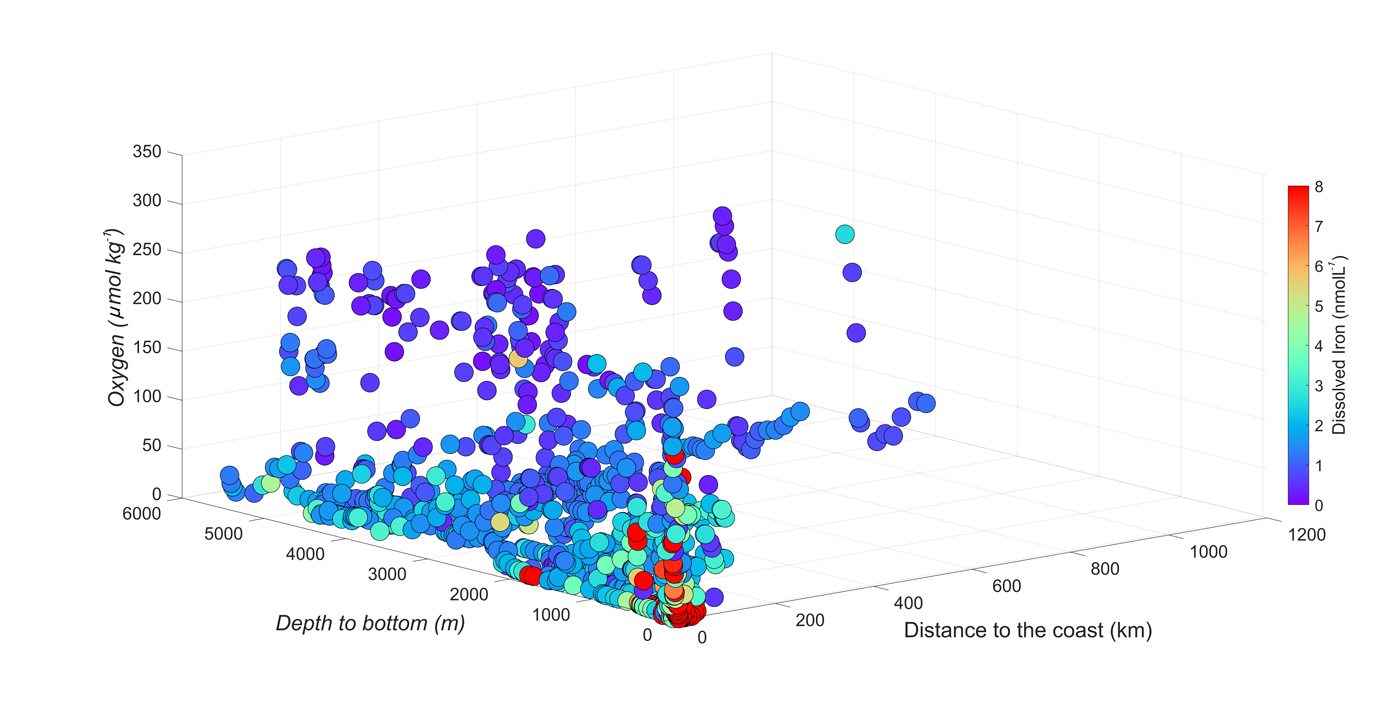A dynamic iron cycle in Peru
Oxygen minimum zones are now well recognised as hotspots of redox sensitive trace metal cycling, often featuring especially high concentrations of the micronutrient iron (Fe). In the Eastern Tropical South Pacific, a plume of Fe is well characterised along the Peruvian shelf, but how does this oxygen sensitive feature respond to Changing El Niño–Southern Oscillation (ENSO) dynamics? Adding 4 new cruises of trace metal to the historical record, Gu and colleagues (2024, see reference below), explore the temporal variation of Fe over 11 cruises making the Peruvian shelf one of the best studied trace metal case studies available. In a narrow coastal band Fe is found to be sensitive to the ENSO index with lower Fe concentrations during El Niño events and higher, more variable, concentrations during cold ENSO phases. Furthermore, in accordance with theory a relationship was found between wind speed and dissolved Fe concentrations.

Reference:
Gu, Y., James Hopwood, M., Gledhill, M., Rapp, I., Wuttig, K., & Achterberg, E. P. (2024). Spatial and temporal variations in the micronutrient Fe across the Peruvian shelf from 1984 to 2017. Progress in Oceanography, 221, 103208. Access the paper: 10.1016/j.pocean.2024.103208
